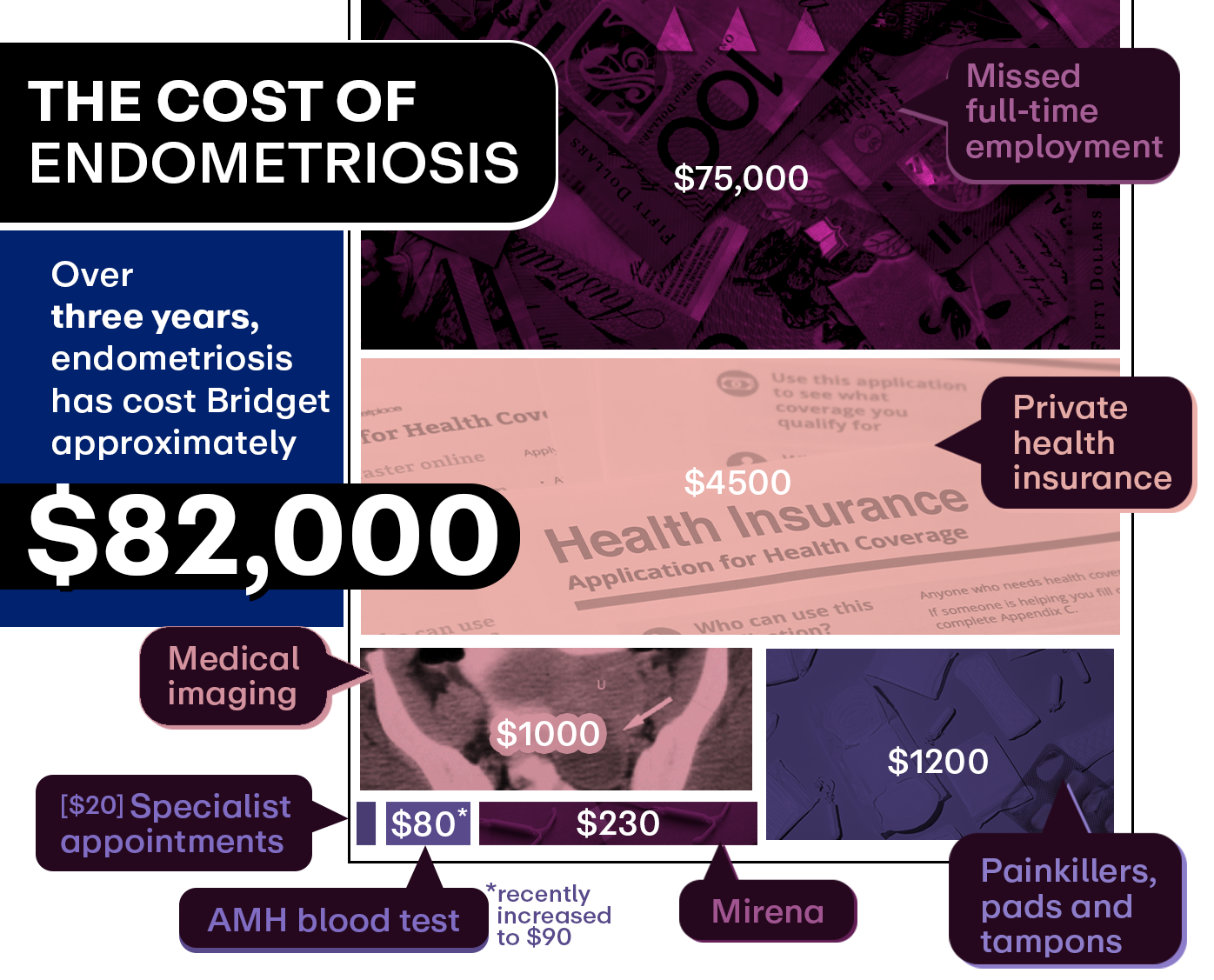Bridget Armstrong estimates treating her endometriosis has cost her $82,000 in the last three years.
The 35-year-old was diagnosed in 2019 after years of experiencing excruciating pain, bleeding and bloating since her period began in her first year of high school.
Armstrong explained to 9news.com.au that the road to her diagnosis was not only lengthy, but one that had impacted her employment and financial security.
READ MORE: Australian celebrity chef Kylie Kwong to close restaurant
"I lost a job when I was studying at university because of the amount of sick leave I needed to take due to endometriosis," she told 9news.com.au.
"It took me 15 years to be diagnosed with significant stage three endometriosis in my uterus, arteries and around my bladder."
As cost of living pressures increase across all Australian households, Armstrong is noticing a significant blow to her hip pocket.
She estimates she's lost approximately $75,000 of income in the last three years due to her endometriosis in the form of unpaid sick leave or inability to work.
And because Armstrong can only work part-time around 59 per cent of her earnings are absorbed by her rent.
"The cost of medical imaging, the doctors appointments, even the cost of transport getting there, my Mirena, it all adds up," she said.
The best treatment for Armstrong's endometriosis is laparoscopic surgery, however this means Armstrong has to take two weeks off work to recover.
The surgery also leaves her hundreds of dollars out of pocket despite having private health insurance.
"I had to fork out for in $500 excess fees on top, I had to stay another three days because of complications," she said.
Armstrong said for her second surgery she had opted for a public hospital and while it did save her some money, she still had to pay hundreds of dollars for an MRI.
"You don't get anything back from that," she said.
Apart from surgery, there is only one class of medication to treat pelvic pain related to endometriosis – they include hormone treatments such as the contraceptive pill, implant or intrauterine device (IUD).
Newer, better contraceptive options that come with fewer side effects are not covered by the Pharmaceutical Benefits Scheme (PBS) and can cost up to triple the amount compared to their older counterparts.
Armstrong also lives with another chronic condition and as a result, she is unable to take oral contraception due to an increased risk of blood clotting, a less common side-effect associated with oestrogen.
Instead, she has to use a hormonal IUD called the Mirena, she said the device itself and the procedure cost her around $230 all up.
"Every year I am losing approximately $27,343 as a direct result of endometriosis," she said.
"This amount would be much higher if I had elected to have my second laparoscopic surgery in a private hospital.
"Even with private health insurance, the out-of-pocket expenses… are not possible for me."
READ MORE: Australia's public holidays for 2024 and 2025: Make the most of your annual leave
Mike Armour, an associate professor in reproductive health at Western Sydney University, told 9news.com.au there were significant direct and indirect costs associated with treating endometriosis and complex pelvic pain.
Armour's research has found that people with endometriosis and chronic pelvic pain spend about $400 a month on allied health, while a previous study he published in 2019 found endometriosis can cost a person up to $30,900 a per year.
"One of the things we can do is try to reduce those indirect costs such as supporting people at work, by allowing people to stay in work, not having them use all their hours, or sick leave that can help people potentially protect themselves against the cost of living," he said.
"The other thing is making sure health funds cover the common interventions of people with endometriosis.
"And governments need to be really mindful of any effective medications that need to be put on the PBS to help reduce costs."
The federal government last week announced $49.1 million in funding to assist women with endometriosis and other gynaecological conditions, including chronic pelvic pain and polycystic ovary syndrome (PCOS).
The investment will allow for extended consultation times and higher rebates for specialist gynaecologist appointments under the Medicare Benefits Schedule.
This means Medicare subsidies will lift to $168.60 for a minimum of 45 minutes during a longer initial gynaecologist consultation, compared to the usual rate of $95.60.
Medicare will almost double its cover for follow-up consultations increasing subsidies to $84.35 for a minimum of 45 minutes, compared to the usual rate of $48.05.
The government has also committed to providing 430,000 more services to help people across the country with complex gynaecological conditions.
Armstrong told 9news.com.au the federal government's latest investment into endometriosis and pelvic pain was "a step in the right direction".
"Anything that benefits the patient will make a difference," she said.
"I hope that GPs will also have access to the Endometriosis Living Guidelines so that they can be led by best practice evidence-based information."






